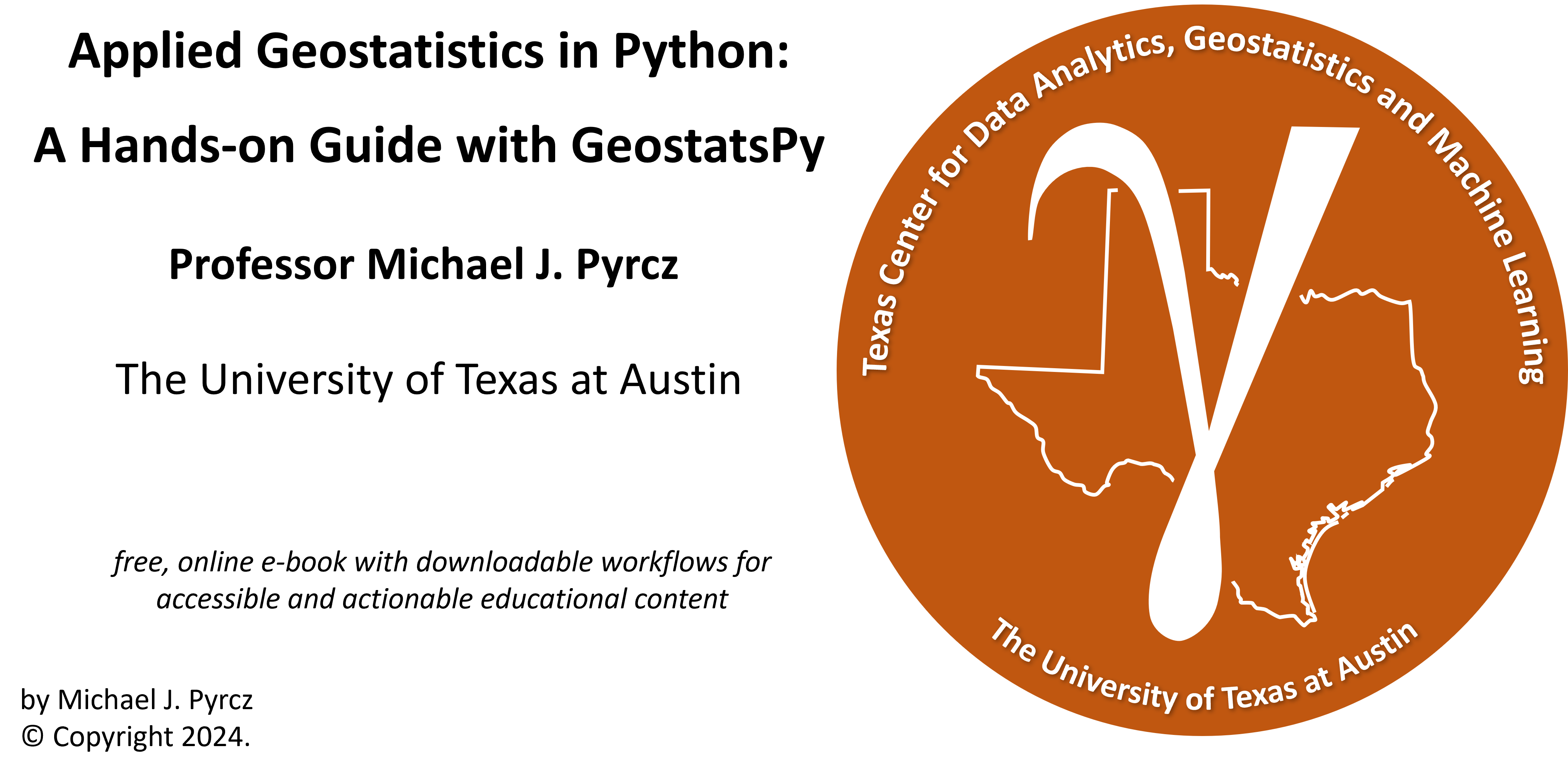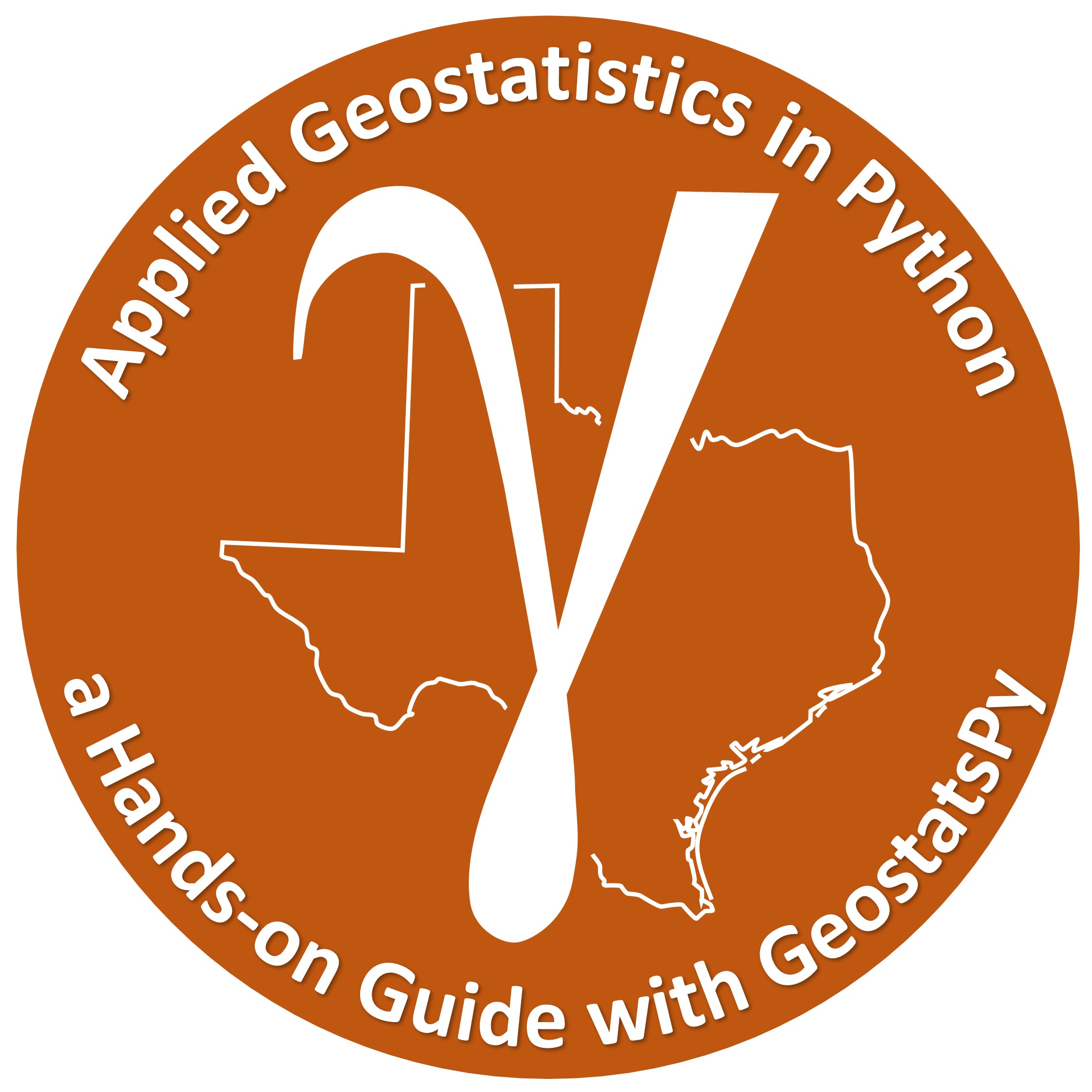
Conclusion#
Michael J. Pyrcz, Professor, The University of Texas at Austin
Twitter | GitHub | Website | GoogleScholar | Book | YouTube | Applied Geostats in Python e-book | LinkedIn
Chapter of e-book “Applied Geostatistics in Python: a Hands-on Guide with GeostatsPy”.
Cite this e-Book as:
Pyrcz, M.J., 2024, Applied Geostatistics in Python: a Hands-on Guide with GeostatsPy [e-book]. Zenodo. doi:10.5281/zenodo.15169133
The workflows in this book and more are available here:
Cite the GeostatsPyDemos GitHub Repository as:
Pyrcz, M.J., 2024, GeostatsPyDemos: GeostatsPy Python Package for Spatial Data Analytics and Geostatistics Demonstration Workflows Repository (0.0.1) [Software]. Zenodo. doi:10.5281/zenodo.12667036. GitHub Repository: GeostatsGuy/GeostatsPyDemos
By Michael J. Pyrcz
© Copyright 2024.
I sincerely hope that this e-book has been helpful. To maximize your learning experience please remember to review the YouTube lectures linked to each workflow to better understand the essential theory and for guidance on best practice and possible applications.
This has been my first attempt to convert my repository of well-documented Python workflows, GeostatsPyDemos: GeostatsPy Python Package for Spatial Data Analytics and Geostatistics Demonstration Workflows Repository [Pyr24b] into an online e-book. Given this source for the content of this e-book, there are natural consequences on the e-book scope, i.e., what is included and what is not? All the workflows demonstrate the functionality of GeostatsPy and the use of GeostatsPy to accomplish fundamental geostatistics workflow steps. Therefore, this is not a general introduction to statistics nor is it a comprehensive treatment of geostatistics. For this I invite you to refer to a standard textbook like, Geostatistical Reservoir Modeling [PD14]. Alternatively, you can review the linked lectures from my Data Analytics and Geostatistics Lecture Series [Pyr24a] for a deeper dive into the theory and practice of geostatistics. Also, I have a recent book chapter that summarizes GeostatsPy, GeostatsPy: Open-Source Geostatistics in Python[Pyr24c] that may be helpful. Recall my stated goal from the introduction.
Welcome!
The goal of this e-book is to teach the application of geostatistics in Python, for those new to geostatistics I provide theory and links to my course content, and for those experienced practitioners I provide example workflows and plots that you can implement.
I am only partially successful in this goal. More can be done! I welcome your feedback and errata, return often and watch this project continue to grow. Yet, I am pleased with this opportunity to expand the reach of my educational content to support stuudents and working professions.
Stay well,
Michael
MICHAEL J. PYRCZ, Ph.D., P.Eng., Professor B.J. Lancaster Professorship and Fellow of the Herring Professorship in Petroleum Engineering Hildebrand Department of Petroleum and Geosystems Engineering and Bureau of Economic Geology, Jackson School of Geoscience The University of Texas at Austin Twitter | GitHub | Website | GoogleScholar | Book | YouTube | LinkedIn
Want to Work Together?#
I hope this content is helpful to those that want to learn more about subsurface modeling, data analytics and machine learning. Students and working professionals are welcome to participate.
Want to invite me to visit your company for training, mentoring, project review, workflow design and / or consulting? I’d be happy to drop by and work with you!
Interested in partnering, supporting my graduate student research or my Subsurface Data Analytics and Machine Learning consortium (co-PI is Professor John Foster)? My research combines data analytics, stochastic modeling and machine learning theory with practice to develop novel methods and workflows to add value. We are solving challenging subsurface problems!
I can be reached at mpyrcz@austin.utexas.edu.
I’m always happy to discuss,
Michael
Michael Pyrcz, Ph.D., P.Eng. Professor, Cockrell School of Engineering and The Jackson School of Geosciences, The University of Texas at Austin
More Resources Available at: Twitter | GitHub | Website | GoogleScholar | Geostatistics Book | YouTube | Applied Geostats in Python e-book | Applied Machine Learning in Python e-book | LinkedIn

